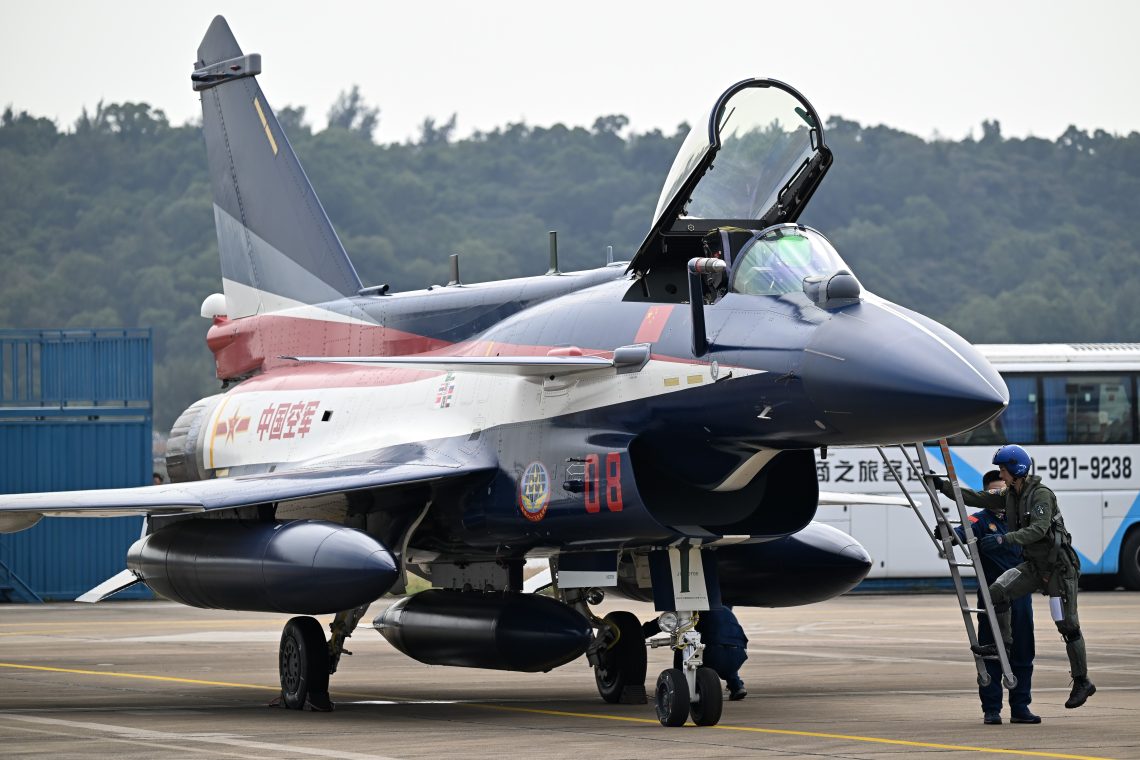China’s arms industry gains ground amid India-Pakistan clash
Pakistan’s military edge in the recent air conflict with India has boosted the reputation of the Chinese defense industry.

In a nutshell
- Chinese-made systems played a key role in Pakistan’s performance
- Russia and Asia may deepen reliance on Chinese weapons
- Concerns about the quality of China’s weapons are unlikely to fade soon
- For comprehensive insights, tune into our AI-powered podcast here
Tensions between India and Pakistan over Kashmir escalated sharply this spring following a deadly terrorist act attributed to militants near Pahalgam, in Indian-administered territory. The attack, which left 28 civilians dead, most of them Hindu tourists, set off a chain of retaliatory measures and military clashes. On May 7, Pakistan claimed its air force had shot down five Indian aircraft, including three Rafale jets, a MiG-29 and a Su-30.
In June, a delegation led by former Pakistani Foreign Minister Bilawal Bhutto Zardari addressed the United Nations. In his remarks, Mr. Bilawal claimed that on the night of the May 7 air engagement, the Pakistani Air Force had 20 Indian fighter jets within targeting range. He asserted that Pakistan had demonstrated considerable restraint and was fully capable of shooting down the aircraft, had it chosen to escalate.
In an interview, Pakistan’s Chairman Joint Chiefs of Staff Committee General Sahir Shamshad Mirza said that: “In the fight with India, we used all our capabilities, including air, space, and cyber domains. It was a synergetic effect that a multi-domain operation was conducted. The JF-17, J-10C and PL-15 fighter jets and missiles played a critical role in achieving operational success.”
India’s Chief of Defense Staff General Anil Chauhan acknowledged in June that some fighter jets were lost during the early-May air engagements with Pakistan, but firmly rejected the Pakistani claim of shooting down five aircraft as “absolutely incorrect,” emphasizing that “numbers are not important.”
On May 8, Reuters quoted anonymous United States officials as saying they were highly confident that the Pakistani Air Force had used Chinese-made J-10C fighter jets to fire air-to-air missiles at Indian warplanes, shooting down at least two.
How Pakistan shot down the Indian aircraft
Pakistan’s performance in the May 7 air conflict has drawn attention to the capabilities of its J-10C fighter jets. The Chinese-made aircraft was allegedly able to engage enemy targets at ranges exceeding 100 kilometers because of its advanced radar system and independent targeting capabilities.
Unlike systems that rely on airborne early warning and control, the J-10C can launch Thunderbolt-15E missiles using onboard sensors and employ relay guidance autonomously. This allows for precise long-range strikes with minimal external support. As a result, the J-10C can function independently in most scenarios, avoiding reliance on other platforms except when absolutely necessary.
Facts & figures
According to Chinese and Pakistani narratives, in the recent India-Pakistan conflict, the J-10C demonstrated clear superiority, showing greater beyond-visual-range combat capabilities than the Indian Air Force’s most advanced fighter, the Rafale. According to Chinese military analysts, the J-10C’s advantage stemmed from significant upgrades to its radar, fire control and weapons systems, which substantially enhanced the combat effectiveness of each individual aircraft.
In recent years, China has supplied Pakistan with advanced airborne early warning and control platforms, such as the ZDK-03. These powerful radar- and sensor-equipped aircraft can detect enemy aircraft, missiles and even maritime targets at long ranges – often exceeding 400 kilometers – providing Pakistan with a significant boost in situational awareness and air defense coordination. Still, India’s airstrikes successfully hit several targets within Pakistan, bypassing Chinese HQ-9 and HQ-16 surface-to-air missiles.
China’s response
The perceived success of the Chinese jets in the India-Pakistan conflict led to a wave of nationalist celebration in China. Immediately after the air battle, the People’s Daily published a full-page feature on the J-10C to showcase the strength of China’s military capabilities. A popular Chinese influencer, Brother Hao, released a satirical video mocking India’s recent jet losses, which rapidly went viral.
However, among China’s military experts, some voices have remained cautious, warning against overconfidence and emphasizing the need for continued strategic discipline.
The general consensus among Chinese military experts is that the J-10C’s success does not mean it will consistently outperform the French Rafale. Both are considered 4.5-generation fighters, and modern air combat largely comes down to radar capabilities and missile guidance. Moreover, the J-10C is not even among the top-tier aircraft in China’s own air force. It is generally ranked around sixth, with performance well below that of China’s fifth-generation fighters like the J-20 and J-35, as well as heavier fourth-generation jets such as the J-16 and J-15.
China’s military industry benefits
The India-Pakistan conflict helped challenge long-standing skepticism toward Chinese military equipment and significantly enhanced the reputation of China’s defense sector. This success has not only bolstered China’s military deterrence but is also expected to boost arms exports.
Following the India-Pakistan air battle, Pakistani military officials have reportedly initiated discussions with China on expanding defense cooperation. According to the Stockholm International Peace Research Institute’s (SIPRI) 2025 report, an estimated 81 percent of Pakistan’s major arms imports now come from China, a notable increase from around 74 percent in the latter half of the previous decade. While China supplied major arms to 44 countries from 2020 to 2024, nearly two-thirds went to just one country: Pakistan. This trend suggests that Islamabad is likely to deepen its reliance on Chinese military technology in the coming years.
Meanwhile, China has recently begun intensive test flights of a new batch of J-10 fighter jets, which Chinese sources claim are intended for export to Uzbekistan. In recent years, Tashkent has sought to diversify its military procurement and, possibly influenced by the India-Pakistan air conflict, has reportedly placed orders for Chinese aircraft.
Development of the J-10 began in the late 1970s, but due to technological and industrial limitations, progress was slow. The program gained momentum in the 1990s, and it was not until the early 2000s that the J-10 officially entered service with the Chinese air force.
By 2004, the J-10’s design was finalized, and the localization of components gradually began. Early production models were powered by Russian-made AL-31FN engines. It was not until 2011 that China began equipping the J-10 with domestically produced engines. Deliveries of the J-10 to the Chinese air force began in 2006. That same year, Russia’s Siberian Aeronautical Research Institute disclosed its involvement in aspects of the J-10 program.
Russian engineers have described the J-10 as being “more or less” a derivative of Israel’s Lavi fighter, incorporating technologies from multiple sources. While the Chinese government denies that the J-10 is based on the Lavi, the aircraft bears a notable resemblance to the Lavi prototype, which Israel never put into production.
According to SIPRI, China’s arms exports between 2020 and 2024 represented 5.9 percent of the global market. This ranked China fourth behind traditional arms exporters such as the U.S., Russia and France. The share was slightly lower compared to the period between 2015 and 2019.
Analysts point to several reasons for China’s relatively weak export performance. In addition to geopolitical tensions, one major factor has been the lack of combat-proven performance, especially for high-tech systems. For years, Chinese weapons – particularly advanced platforms – had limited credibility due to their untested status in real-world conflicts.
China’s missile technology is particularly noteworthy. Elements of the HQ-19 missile series have reportedly been incorporated into Iranian systems, and these technologies have demonstrated their effectiveness in the recent Israel-Iran conflict. Meanwhile, the U.S. Department of Defense has warned that China now possesses one of the world’s most advanced arsenals of hypersonic weapons, including systems designed to overwhelm or bypass U.S. missile defense networks.
Since the start of Russia’s full-scale invasion of Ukraine, China’s relations with many of its neighboring countries have significantly improved.
According to a 2025 report by the South China Morning Post, China’s hypersonic weapons are on the verge of a major upgrade. Future models will reportedly adopt a trajectory similar to a skipping stone, using a new type of solid-fuel propellant capable of multiple ignition cycles. These missiles are expected to reach speeds of up to Mach 15 during atmospheric reentry. This advancement has been made possible by a breakthrough in materials engineering: Chinese scientists have succeeded in developing hypersonic components using stainless steel, a material previously considered unsuitable for withstanding extreme heat.
During recent U.S.-China tariff negotiations in London, the Chinese delegation demanded that the U.S. lift export controls on microchips. In response, Treasury Secretary Scott Bessent reportedly replied, “So you want no export controls? Fine. I’d like to take home a couple of your best hypersonic missiles, please. Can I have them?” Upon hearing this, the Chinese side backed down. The exchange also reflects a growing recognition within the U.S. that some Chinese weapons systems may have already surpassed their American counterparts.
Meanwhile, Taiwan’s defense ministry, in its assessment of the Fujian aircraft carrier’s electromagnetic catapult, concluded that the system’s efficiency exceeds that of the U.S. Navy’s earlier Ford-class design. This, too, highlights the gains made by China’s defense industry in its effort to leapfrog traditional military powers.
The geopolitical impact of China’s military industry
Since the start of Russia’s full-scale invasion of Ukraine, China’s relations with many of its neighboring countries have significantly improved, several of which are also potential markets for China’s growing military industry. Nevertheless, since most of its weapons have not yet been tested in actual combat, China still faces the challenge of proving their effectiveness. At the same time, its growing use of artificial intelligence and other advanced technologies in weapons production is steadily boosting its regional standing.
More by Chinese affairs expert Junhua Zhang
- Will Trump’s plan to split Russia and China succeed?
- China’s Two Sessions: Crisis, control and an uncertain future
- Why countries worldwide are cautious of Chinese exports
This expanding regional influence has gone hand in hand with China’s quiet consolidation of regional hegemony. One hallmark of this hegemony is the ability to enable certain neighbors to wage so-called proxy wars. During the recent India-Pakistan conflict, the Indian military claimed that China had provided Pakistan with air defense and satellite imagery support. Many observers believe the incident offered India a firsthand look at the performance and deterrent power of Chinese weapons. Against a backdrop of persistent tensions – whether over borders, water resources or market access – Beijing has strategically supported Pakistan and others to exert pressure on India by proxy.
At the same time, Beijing is showing signs of flexibility in managing its relationship with New Delhi. Commercial flights between the two countries have recently resumed, and Chinese President Xi Jinping sent condolences to India following a recent plane crash. India remains a crucial market for China, especially as access to the U.S. market tightens, and some observers in China even speculate that Chinese arms sales to India could one day become possible.
Russia, too, is increasingly reliant on Chinese military support. Russian defense analysts acknowledge that future weapons purchases from China are likely unavoidable. In practice, Russia already imports military components and systems from China. Notably, Chinese-made laser weapons have recently appeared on the battlefield in Ukraine, reportedly used to counter Ukrainian drones.
Since 2022, Beijing’s standing across Asia has only grown stronger. Few countries in the region are willing to openly challenge China. The only persistent outlier is North Korea, but if Moscow falls further under Beijing’s influence, even Pyongyang may eventually be forced to fall in line.
For Taiwan, the implications are especially serious. The quality of Chinese military equipment continues to improve rapidly, posing a growing threat. Taiwan’s forces now face fighters and missile systems more advanced than the J-10 and PL-15E, and its air force is less well-equipped than India’s. Taiwan’s U.S.-made F-16Vs are roughly on par with the J-10CE, but its Mirage 2000s lag behind the Rafale, and the island still lacks an operational Airborne Warning and Control System (AWACS) platform.
Scenarios
Likely: China’s regional hegemony strengthens
With the integration of AI and advanced materials, China’s military industry is undergoing a major leap forward. In Asia, only Russia remains a potential competitor in this sector, but its long-term viability is in doubt due to its ongoing war in Ukraine.
China’s recent diplomatic successes have further solidified its regional hegemony. The Ukraine war, as it stands, has indirectly boosted Beijing’s influence among neighboring countries. Southeast Asia remains economically dependent on China, particularly for technology and component exports. In Mongolia, frustration over perceived U.S. disengagement may lead to a quiet shift away from its traditional “third neighbor” policy and might tilt toward China. Seoul, under a more China-friendly administration, appears to be loosening its alignment with the informal Japan-Taiwan-South Korea axis. In Central Asia, China’s regional role has expanded as Russian President Vladimir Putin remains preoccupied with the war.
Meanwhile, the U.S. Indo-Pacific strategy, particularly under President Donald Trump, risks becoming hollow in both form and substance. Despite its domestic economic challenges, China’s rising military and economic stature in Asia increasingly appears to be an irreversible force in the entrenchment of its regional hegemony.
Unlikely: The West effectively hems in China
In this scenario, the U.S. adopts a strategy of assertive and targeted containment. It continues to block China’s access to advanced semiconductor technology and, through coordinated efforts with allied democracies, effectively neutralizes Beijing’s ability to weaponize rare earth exports.
Combined with Europe’s renewed focus on rebuilding its defense industrial base, these measures help ensure that Western countries still maintain an edge in the global arms market, limiting the reach of China’s regional hegemony.
Ultimately, the role of the U.S. will be decisive in shaping this strategic competition. Yet it remains uncertain whether the second Trump administration would break from its earlier approach and introduce sustained policies capable of countering China’s long-term ambitions.
Contact us today for tailored geopolitical insights and industry-specific advisory services.







